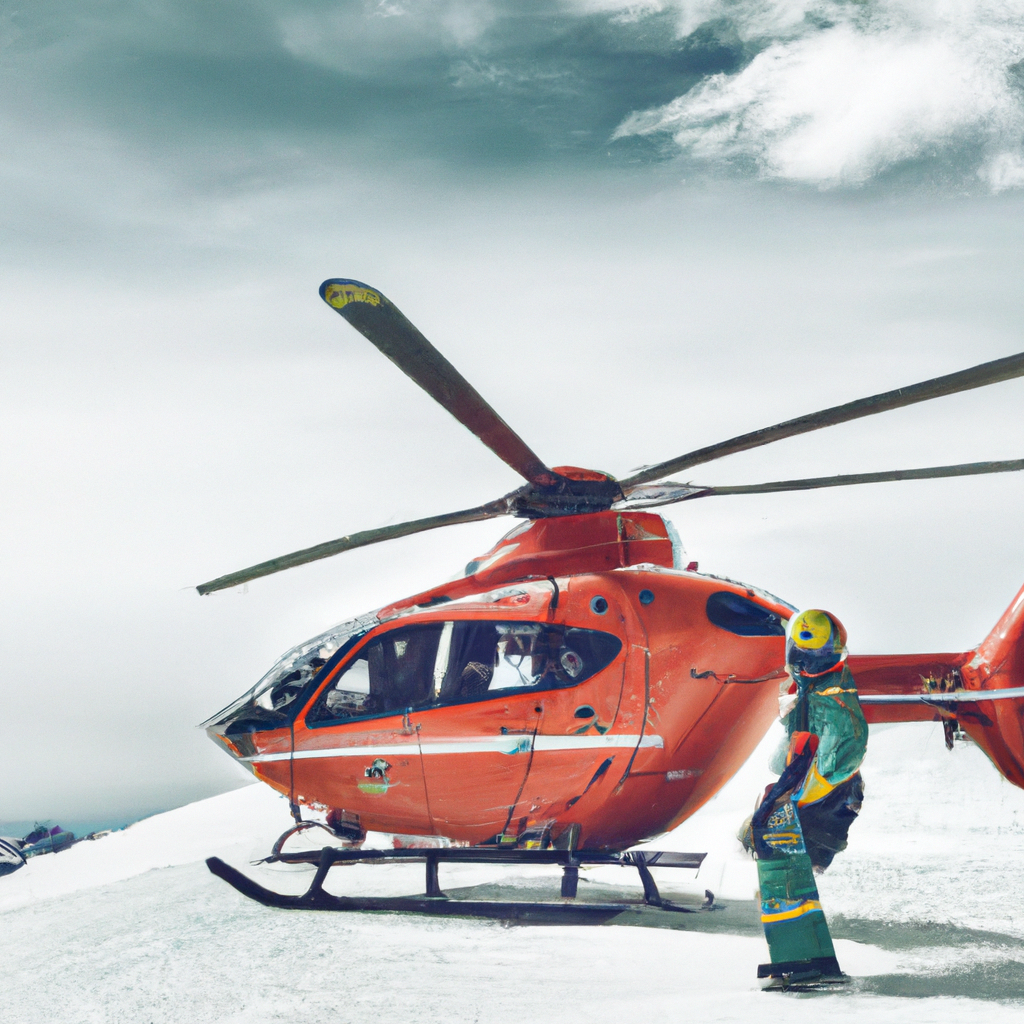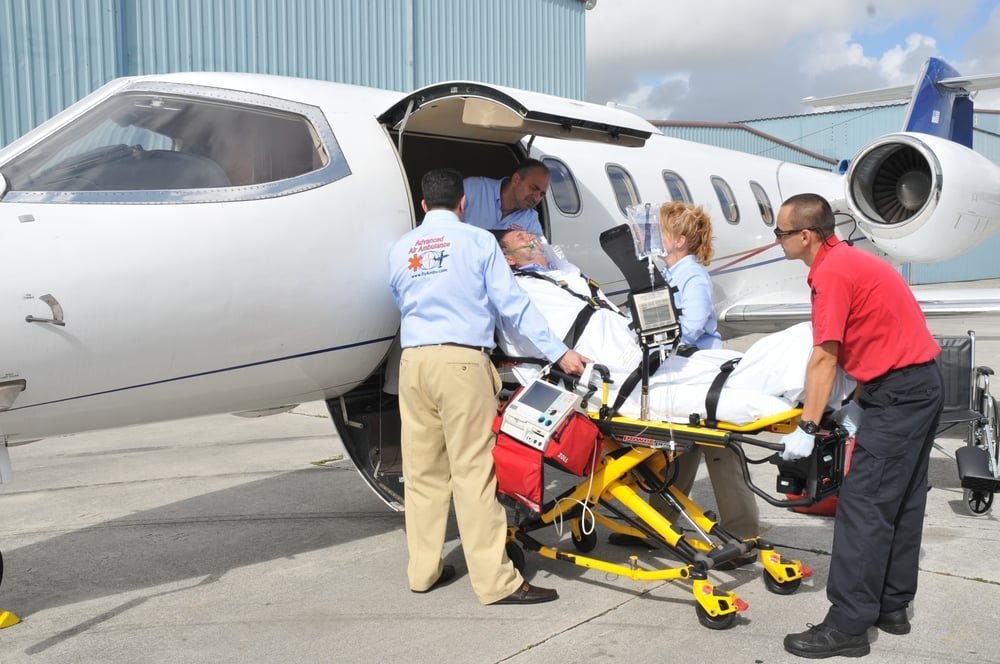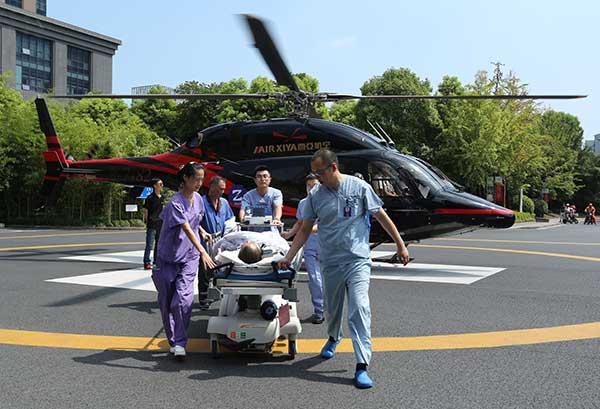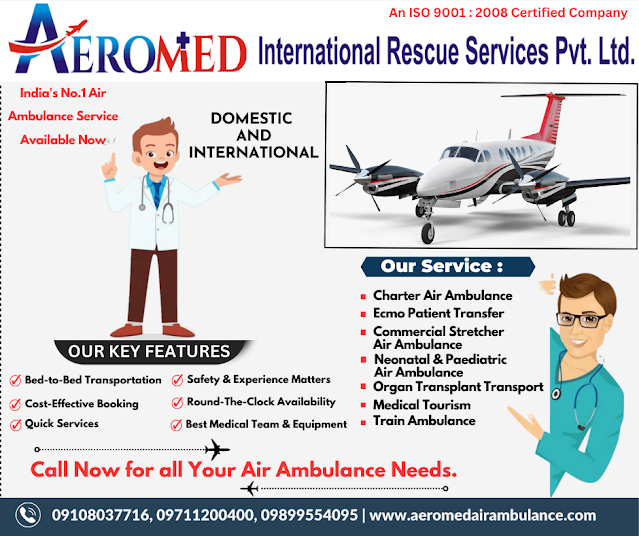So you’re curious about air ambulance services in mountainous regions, huh? Well, let me tell you, it’s no walk in the park. When it comes to providing emergency medical care in the rugged terrains and high altitudes, there are challenges aplenty. Imagine the narrow, winding roads, the inaccessible locations, and the unpredictable weather conditions. It’s enough to make your head spin! But don’t worry, because where there’s a challenge, there’s also triumph. In this article, we’ll explore the incredible feats and obstacles faced by air ambulance services in these mountainous regions. You might just be amazed at what these brave professionals are capable of. So, buckle up and get ready to take off on this exhilarating journey into the world of air ambulance services in mountainous regions!
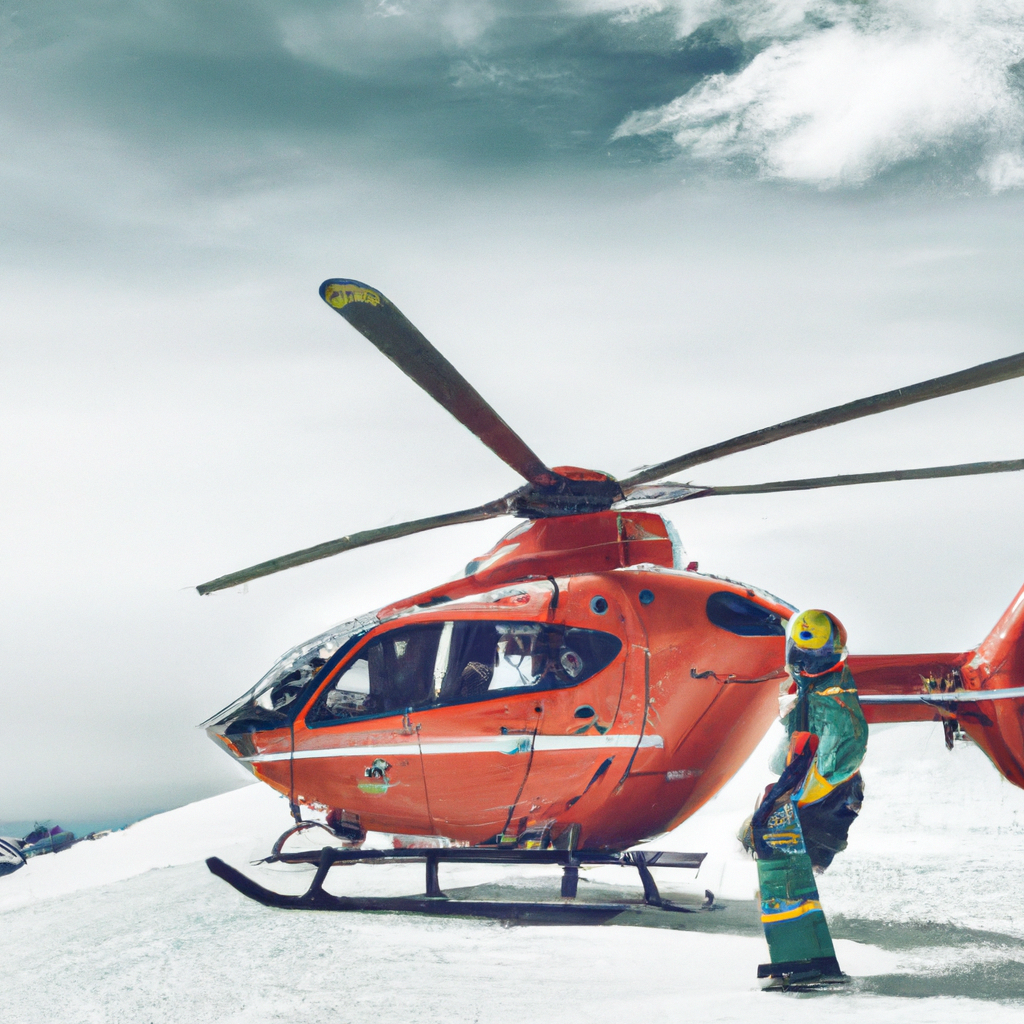
Understanding the Terrain
The unique challenges of mountainous regions
When it comes to air ambulance services, operating in mountainous regions presents its own unique set of challenges. The unpredictable nature of rugged terrains demands a high level of expertise and precision. Steep slopes, narrow valleys, and rocky landscapes pose obstacles to safe and efficient operations. In addition, the constantly changing weather conditions further complicate the task of navigating through these areas.
Effects of high altitude on aircraft performance
One crucial factor that cannot be overlooked in mountainous regions is the impact of high altitude on aircraft performance. As the altitude increases, the air becomes thinner, resulting in reduced lift and engine performance. This means that air ambulances operating in these areas need to carefully calculate their payload and fuel requirements to ensure safety. The reduced air density also affects the aerodynamics of the aircraft, requiring pilots to make adjustments to their flying techniques.
Navigating through narrow and winding pathways
Another significant challenge faced by air ambulance services in mountainous regions is the need to navigate through narrow and winding pathways. Unlike traditional airports, where runways provide ample space for takeoff and landing, mountainous terrains often lack designated landing zones. Pilots must carefully maneuver their aircraft through these constrained spaces, requiring exceptional precision and control. The presence of obstacles such as trees, power lines, and other structures further adds to the complexity of the operation.
Weather Conditions
Impact of inclement weather on air ambulance operations
Weather conditions play a critical role in the operations of air ambulance services in mountainous regions. Inclement weather, such as strong winds, heavy snowfall, and fog, can significantly hamper their ability to provide timely and safe medical assistance. The presence of low clouds and reduced visibility makes navigation challenging, while strong winds can make aircraft control more difficult. These adverse weather conditions often lead to delays or even cancellations of air ambulance flights, potentially putting the lives of patients at risk.
Handling strong winds and turbulence
When operating in mountainous regions, air ambulance crews must be prepared to handle strong winds and turbulence. The rugged terrain can create updrafts and downdrafts, which can affect the stability of the aircraft. Pilots need to constantly monitor weather reports and make informed decisions about whether it is safe to fly in such conditions. Advanced training and expertise are vital to ensure the safety of both the crew and the patients on board.
Dealing with heavy snowfall and fog
In mountainous regions, heavy snowfall and fog can reduce visibility to near zero, making operations extremely challenging for air ambulance services. The risk of spatial disorientation increases, posing a significant threat to the safety of the crew and the patient. Specialized training and equipment, such as night vision goggles and radar systems, help mitigate these risks. Additionally, pilots must closely coordinate with ground emergency services to ensure a safe approach and landing in these adverse weather conditions.
Limited Landing Zones
Identifying suitable landing zones in mountainous areas
One of the primary challenges faced by air ambulance services in mountainous regions is the limited availability of suitable landing zones. Unlike urban areas, where airports and helipads are easily accessible, mountainous terrains often lack designated spots for helicopters to land. Identifying suitable landing zones involves careful evaluations of factors such as slope gradient, obstructions, clearance, and surface conditions. The ability to quickly and accurately assess potential landing zones is critical to the success of air ambulance operations in these areas.
Overcoming obstacles for safe landings
Even when landing zones are identified, air ambulance crews may encounter obstacles that pose risks during the landing process. Dense vegetation, uneven terrain, and unpredictable weather conditions can all make landing operations challenging. Pilots must employ their expertise to execute precise maneuvers that ensure a safe touchdown. Communication and cooperation between the air ambulance crew and the ground team play a crucial role in identifying and mitigating potential hazards before and during the landing process.
Utilizing specialized equipment for difficult terrain
To navigate and land safely in mountainous regions, air ambulance services rely on specialized equipment designed for difficult terrains. Skid gear or retractable landing gear, for example, allows helicopters to land on uneven surfaces. Additionally, advanced navigation systems, including terrain awareness and warning systems, provide pilots with real-time information about the terrain and potential obstacles. These tools enable better decision-making and enhance the safety of air ambulance operations in mountainous areas.
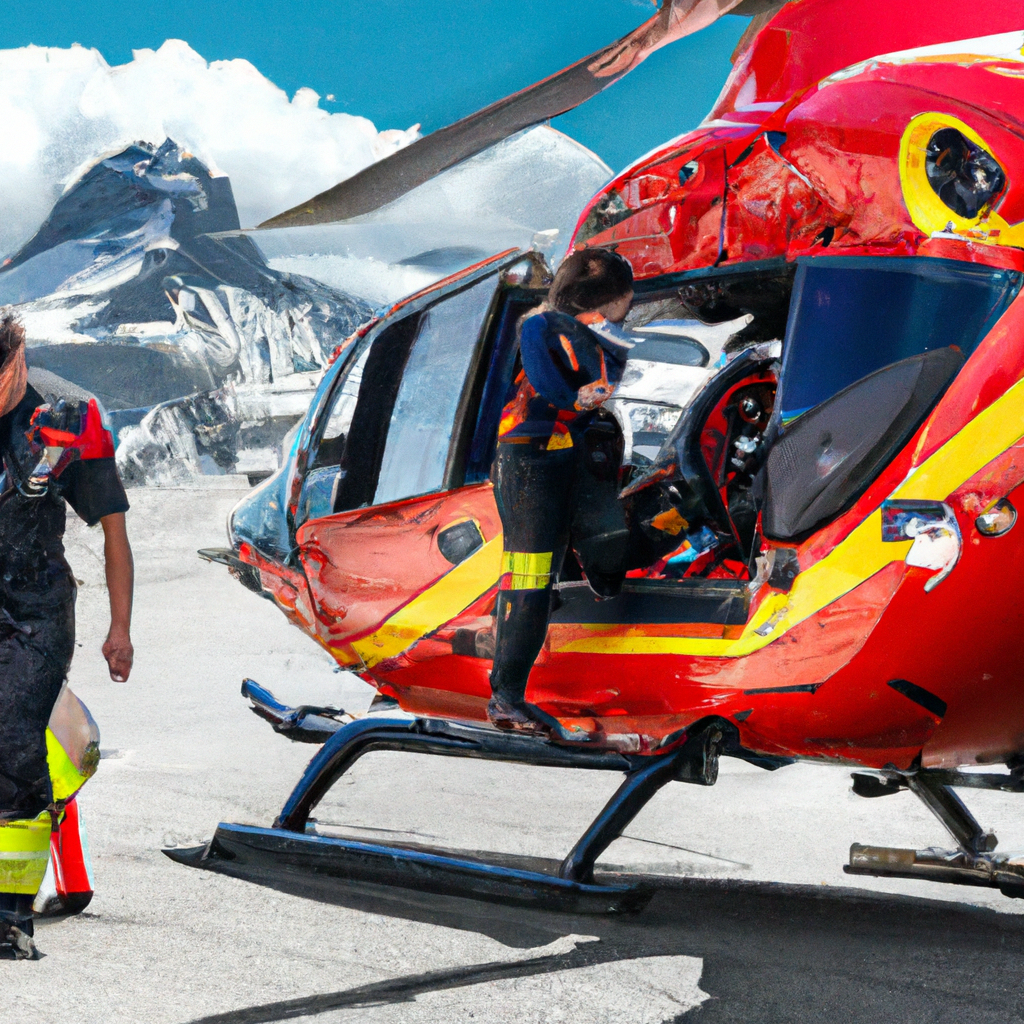
Medical Challenges
Providing critical care in remote locations
Mountainous regions are often remote and isolated, limiting access to medical facilities. Air ambulance services play a crucial role in bridging this gap by providing critical care to patients in these hard-to-reach locations. However, delivering medical care in such settings presents its own set of challenges. Limited space, equipment, and resources require air ambulance crews to adapt and improvise, ensuring the highest level of medical care despite the constraints of the environment.
Dealing with altitude sickness and hypoxia
Altitude sickness and hypoxia are significant medical challenges faced by air ambulance crews in mountainous regions. The decrease in atmospheric pressure at high altitudes can result in oxygen deprivation, causing symptoms like dizziness, nausea, and fatigue. In severe cases, altitude sickness can be life-threatening. Air ambulance teams must be equipped to monitor and manage these conditions effectively. Oxygen supplementation and proper acclimatization protocols are key to ensuring the well-being of the crew and the patients during flights at high altitudes.
Securing patients during rough flights
Mountainous regions often involve rough flights due to high winds and turbulent weather conditions. This can pose additional risks to patients onboard air ambulances. Proper securing and stabilization of patients is crucial to prevent further injuries and ensure their safety throughout the flight. Air ambulance crews are trained in medical procedures and techniques to secure patients effectively, taking into account the unique challenges presented by the mountainous terrain.
Availability and Access
Limited availability of air ambulance services in mountainous regions
One of the significant challenges faced by individuals in mountainous regions is the limited availability of air ambulance services. The rugged terrain, inclement weather conditions, and logistical challenges make it difficult to establish a widespread network of air ambulance providers. Remote communities often find themselves at a disadvantage due to the distance from operational bases, resulting in delayed emergency medical response times.
Overcoming logistical challenges for quick response
Logistical challenges are inherent in operating air ambulance services in mountainous regions. The need for specialized equipment, additional training, and coordination with ground emergency services requires careful planning and organization. Overcoming these challenges is essential to ensure a quick and efficient response to medical emergencies. Air ambulance providers must collaborate with local authorities and communities to identify suitable strategies and resources.
Improving accessibility for remote communities
Efforts are being made to improve accessibility to air ambulance services for remote communities in mountainous regions. This includes establishing temporary landing zones or helipads in strategic locations, implementing advanced technology for enhanced communication and navigation, and engaging in community outreach initiatives to raise awareness about the availability and benefits of air ambulance services. Improving accessibility can help save more lives in emergencies by reducing response times and ensuring timely medical care.
Training and Expertise
Specialized training for air ambulance crews in mountainous areas
Operating in mountainous regions requires specialized training for air ambulance crews. Pilots receive additional training on flying in challenging topography, including navigation techniques specific to mountainous terrains. Medical personnel are trained in wilderness and remote medical care, equipping them with the skills necessary to provide critical care in these environments. The expertise gained through specialized training ensures that air ambulance services can deliver the highest standard of care in challenging conditions.
Navigating through challenging topography
Navigating through challenging topography requires expertise and knowledge of the specific terrain. Pilots must be able to read and interpret maps, understand the unique weather patterns of the region, and make informed decisions about flight routes. Additionally, they need to be familiar with the use of topographical charts, GPS systems, and other navigational tools to ensure safe and efficient operations.
Adapting medical protocols to remote locations
In remote mountainous locations, air ambulance crews often find themselves working in austere environments with limited resources. This necessitates the adaptation of medical protocols to suit the specific needs and constraints of the situation. Medical personnel must be adept at improvising and making critical decisions under pressure. Their training focuses on providing effective medical interventions with limited equipment and resources, ensuring the best possible outcome for the patients they serve.
Interagency Cooperation
Collaboration between air ambulance services and local authorities
Successful air ambulance operations in mountainous regions rely on strong collaboration between air ambulance services and local authorities. Effective communication channels and mutual understanding are crucial for seamless coordination during emergency responses. Establishing protocols and sharing information between the involved parties strengthens the ability to respond swiftly and efficiently to medical emergencies in remote areas.
Coordinating with ground emergency services
Coordination with ground emergency services is vital for the success of air ambulance operations in mountainous regions. Ground crews play a crucial role in facilitating safe landings, securing landing zones, and providing crucial support during patient transfers. Regular training exercises and joint response drills help build a strong working relationship between air ambulance crews and ground emergency services, ensuring smooth collaboration during critical situations.
Sharing resources and information for better outcomes
Sharing resources and information is essential to overcome the challenges faced by air ambulance services in mountainous regions. Collaboration between different agencies and organizations allows for the pooling of expertise, equipment, and knowledge. By working together, air ambulance services can optimize their operations, efficiently allocate resources, and improve outcomes for patients in remote and rugged terrains.
Advanced Technology
Utilizing advanced navigational systems for precise flight paths
Advanced navigational systems are a game-changer for air ambulance services operating in mountainous regions. These systems provide pilots with real-time information about the terrain, obstacles, and weather conditions. Terrain awareness and warning systems, along with GPS navigation, ensure precise flight paths in challenging topography. This technology enhances safety by enabling pilots to make informed decisions, reducing the risk of accidents and improving response times.
Equipping aircraft with state-of-the-art medical equipment
Aircraft used by air ambulance services in mountainous regions are equipped with state-of-the-art medical equipment. These aircraft serve as flying hospitals, providing critical care to patients during transit. Advanced life support equipment, such as defibrillators, ventilators, and monitors, are essential for delivering high-quality medical care in challenging environments. The availability of such equipment onboard air ambulances improves patient outcomes and increases the chances of saving lives in mountainous regions.
Incorporating telemedicine for remote medical consultations
Telemedicine plays a significant role in supporting air ambulance services in mountainous regions. Through telecommunication technology, medical professionals can conduct remote consultations, allowing for real-time interaction between the on-board medical crew and specialists on the ground. This enables the air ambulance team to access expert advice and guidance, enhancing their ability to deliver optimal care to patients in remote locations. Telemedicine also helps address the challenges of limited medical resources in mountainous regions, ensuring access to specialized care when needed.
Air Ambulance Equipment and Adaptations
Designing helicopters and planes for mountainous operations
Designing helicopters and planes specifically for mountainous operations is crucial to ensure safe and effective air ambulance services. These aircraft are equipped with powerful engines, robust frames, and specialized landing gear to handle the demanding conditions of mountainous terrains. Additionally, they often feature enhanced maneuverability, allowing pilots to navigate through narrow valleys and tight spaces with precision. The design adaptations cater to the unique challenges posed by mountainous regions, enabling air ambulance services to fulfill their life-saving mission.
Installing specialized equipment for mountain rescues
In addition to aircraft design, specialized equipment is installed in air ambulances for mountain rescues. Hoist systems enable the safe extraction of patients from hard-to-reach areas, such as steep slopes or dense vegetation. Stretcher systems equipped with anchor points and harnesses ensure the secure transportation of patients during rough flights. These specialized adaptations enhance the capabilities of air ambulance services in mountainous regions, facilitating the rescue and transportation of patients in the most challenging conditions.
Ensuring safety in challenging weather conditions
Safety in challenging weather conditions is of utmost importance for air ambulance services in mountainous regions. Aircraft are fitted with weather radar systems that allow pilots to detect and navigate around adverse weather patterns, such as thunderstorms and heavy precipitation. De-icing systems ensure that the aircraft remains free from ice buildup during flights in sub-zero temperatures. These safety measures reduce the risk of accidents and make air ambulance operations in mountainous regions more reliable and efficient.
Success Stories and Case Studies
Rescuing injured hikers from remote mountain locations
Numerous success stories and case studies highlight the invaluable role of air ambulance services in rescuing injured hikers from remote mountain locations. Swift response times, expert navigation, and specialized equipment have enabled air ambulance crews to reach these stranded individuals quickly and provide critical medical care. The ability to safely transport patients to medical facilities in a timely manner has significantly increased their chances of survival and recovery.
Providing life-saving medical interventions in difficult terrains
Air ambulance services in mountainous regions have demonstrated their ability to provide life-saving medical interventions in difficult terrains. From conducting emergency surgeries in the field to administering vital medications, the medical personnel onboard air ambulances are equipped to handle a wide range of medical emergencies. Their expertise and resourcefulness in challenging environments have saved countless lives, showcasing the impact of air ambulance services in mountainous regions.
Overcoming obstacles to save lives in extreme weather conditions
Perhaps the most poignant stories come from the air ambulance crews who have overcome incredible obstacles to save lives in extreme weather conditions. Battling through storms, navigating treacherous landscapes, and braving adverse conditions, these brave individuals have exemplified the dedication and resilience required for such operations. Their unwavering commitment to providing life-saving care in the face of immense challenges serves as a testament to the triumphs achieved by air ambulance services in mountainous regions.
In conclusion, air ambulance services in mountainous regions face numerous challenges, from navigating rugged terrains to dealing with adverse weather conditions. The unique combination of limited landing zones, medical challenges, logistical complexities, and remote access necessitates specialized training, advanced technology, and interagency cooperation. Despite these challenges, success stories and case studies demonstrate the critical importance of air ambulance services in saving lives and providing medical care in the most remote and treacherous terrains. Through constant evolution and adaptation, air ambulance services continue to triumph over the obstacles that they encounter in mountainous regions, ensuring that medical emergencies in these areas receive the attention and care they deserve.
